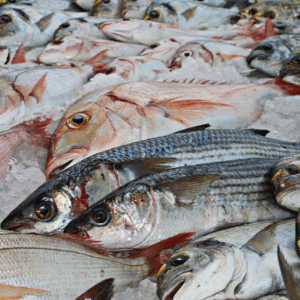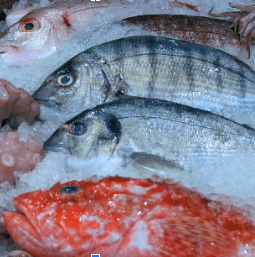 Are you tired of buying seafood only to discover it’s not fresh or high-quality? If so, don’t worry – you’re not alone. With so many options on the market, it can be difficult to know what to look for when purchasing seafood.
Are you tired of buying seafood only to discover it’s not fresh or high-quality? If so, don’t worry – you’re not alone. With so many options on the market, it can be difficult to know what to look for when purchasing seafood.
We’ve got you covered with tips from experts in the industry who will teach you how to identify and choose fresh and high-quality seafood every time. Read on to learn more about this essential skill that will make your next seafood dish truly stand out!
Look for Clear and Bright Eyes
When you’re at the seafood counter, take a close look at the eyes of the fish. They should be clear and bright, not cloudy or dull. This is a good indicator of freshness.
The eyes of a fish can tell you a lot about its quality. If they’re glossy and shiny, it’s a good sign that the fish is fresh. If they’re cloudy or dull, it’s a sign that the fish is not as fresh as it could be.
Check for Firmness
When buying seafood, it is important to check for firmness. This is because fresh seafood should be firm to the touch, while high-quality seafood should be even firmer. To check for firmness, simply press down on the seafood with your finger. If it feels mushy or soft, it is probably not fresh or of high quality.
Smell the Seafood
The best way to identify fresh and high-quality seafood is by using your sense of smell. The seafood should have a light, ocean-like smell, without any Fishy smells. If it smells too fishy, it is probably not fresh.
If the seafood has an overly strong fishy smell, it is most likely of questionable freshness. The smell of seafood should never be ammoniated or sour.
Check the Color
Color can be an indicator of freshness, and quality too. Fresh seafood should have a vibrant color. If the color is dull or faded, it’s a sign that the seafood is not as fresh as it could be.
Some fish, like tuna, can change color when they are exposed to oxygen. This is normal and does not mean that the fish is not fresh.
Smoked seafood will usually have a darker color than fresh seafood. This is because of the smoking process and is not an indicator of freshness.
In general, shellfish should be avoided if they are not brightly colored. For example, lobsters and crabs should be a deep red or blue. If they are brown or green, they are not as fresh.
Ask the Seller
 If you’re unsure about the freshness or quality of seafood, the best thing to do is ask the seller. Here are some questions you can ask:
If you’re unsure about the freshness or quality of seafood, the best thing to do is ask the seller. Here are some questions you can ask:
- When was this seafood caught?
- Where was this seafood caught?
- How was this seafood caught?
- Is this seafood wild or farmed?
- What is the scientific name of this seafood?
- Can I see a photo of this seafood before I purchase it?
Look for Proper Storage
One of the easiest indications of quality seafood is to look for proper storage. When buying from a seafood shop, look to see if the seafood is being kept in a hygienic way, such as in a fridge or a display case.
This shows that the seafood is being stored in the proper, colder environment that it needs to remain fresh and safe to eat. If the seafood is being kept in a cool but not refrigerated environment, then it is most likely not fresh and should not be purchased.
Consider the Season
When it comes to seafood, seasonal availability is one of the most important factors in determining freshness and quality. In general, fish are more plentiful and easier to catch during certain times of the year, so knowing when certain seafood is in season can help you make sure you’re getting the best possible product.
For example, if you buy fresh seafood in Louisiana, spring and summer are typically the best times to buy lobster, because that’s when they’re most active and thus more easily caught. If you’re looking for shrimp, on the other hand, autumn is usually a better bet, as shrimp tend to be larger and more plentiful at that time of year.
Of course, there are always exceptions to these general rules – for instance, farmed salmon is available year-round – but in general, it’s a good idea to buy seafood that’s in season. Not only will it be fresher and tastier, but it’ll also be more affordable.
Learn How to Identify Fresh and High-Quality Seafood
When it comes to seafood, freshness, and quality always come first! Follow these tips to ensure you get the most out of every purchase. Try sourcing from a local trusted provider, check the ratings and reviews, and use the smell and sight tests for maximum assurance.
Enjoy your seafood with confidence!
